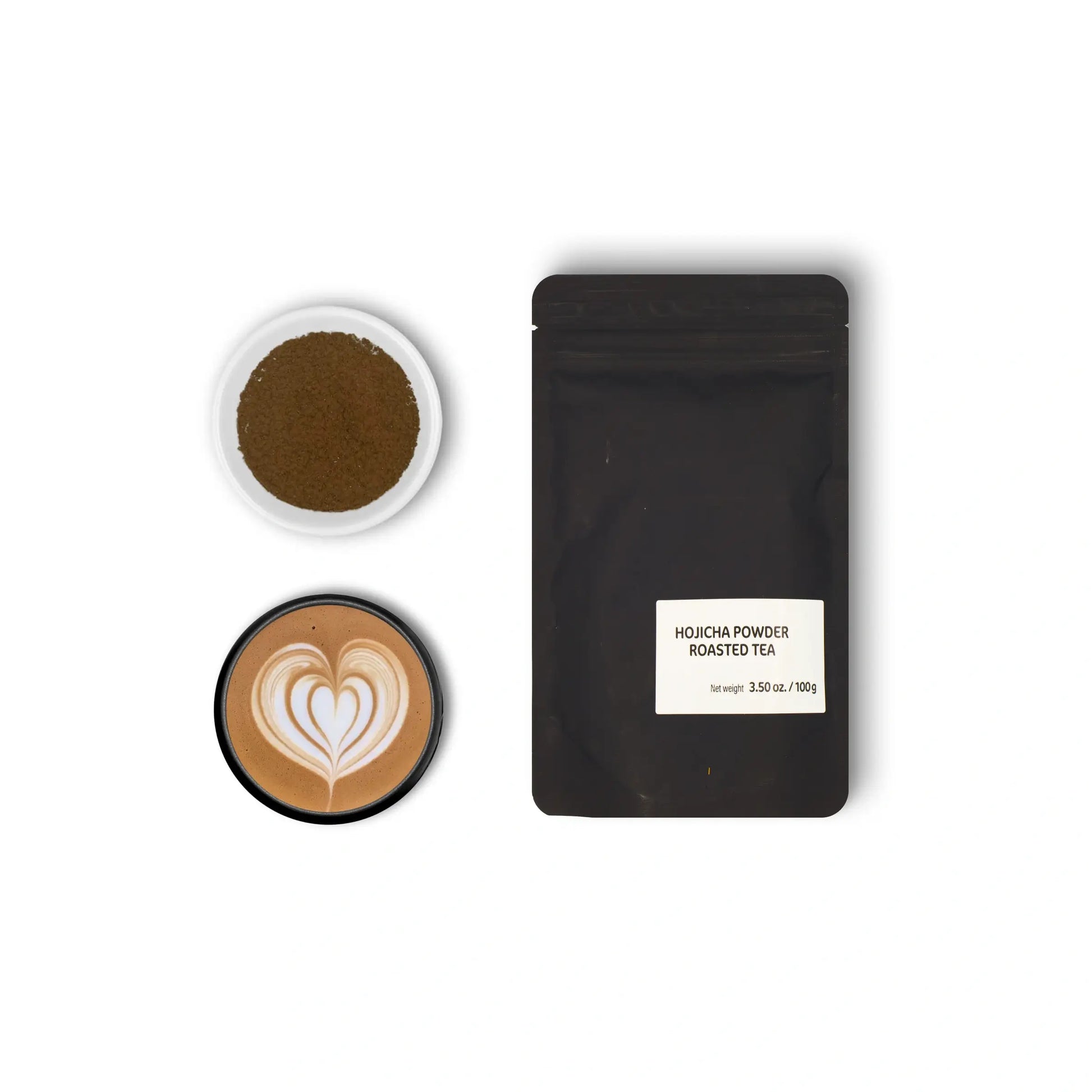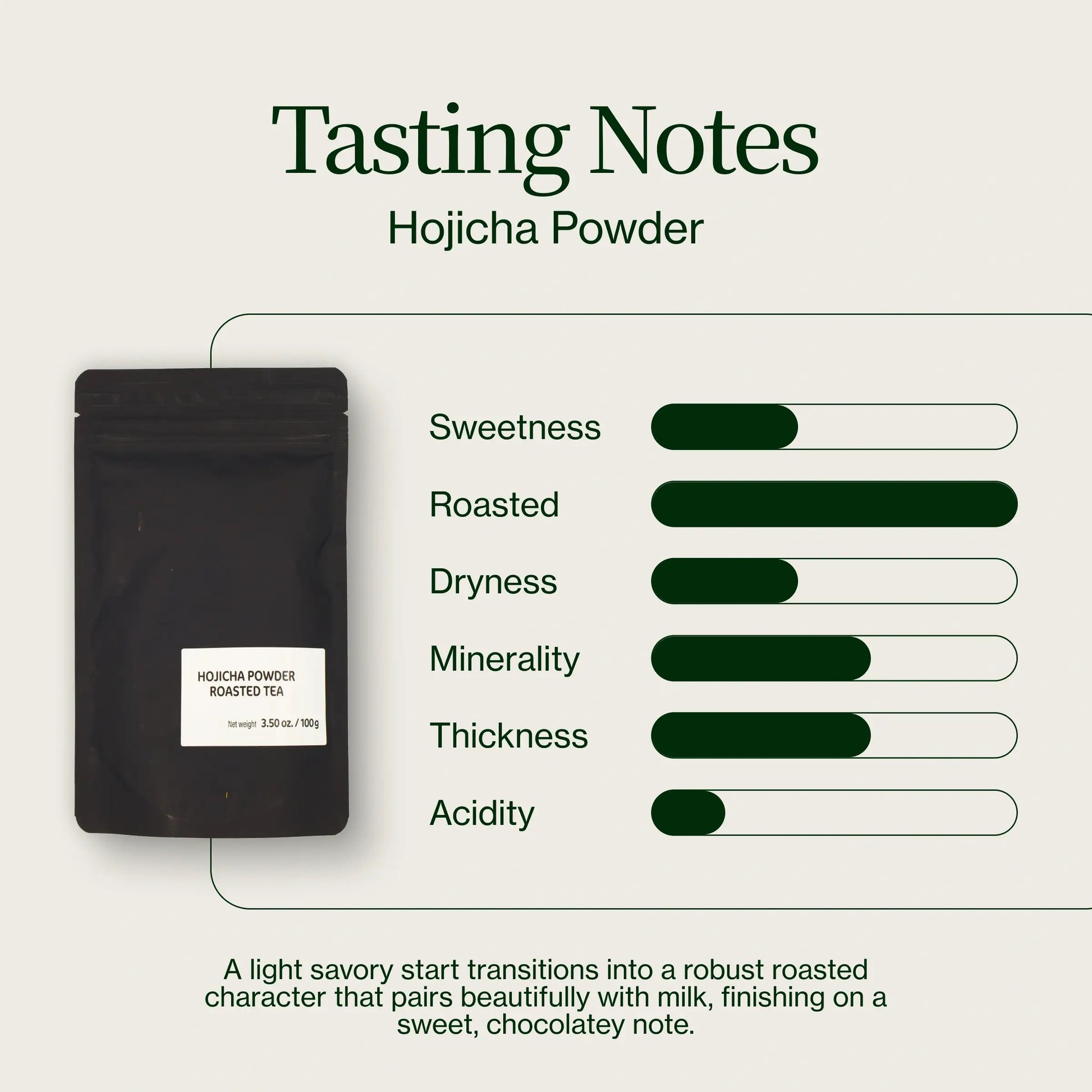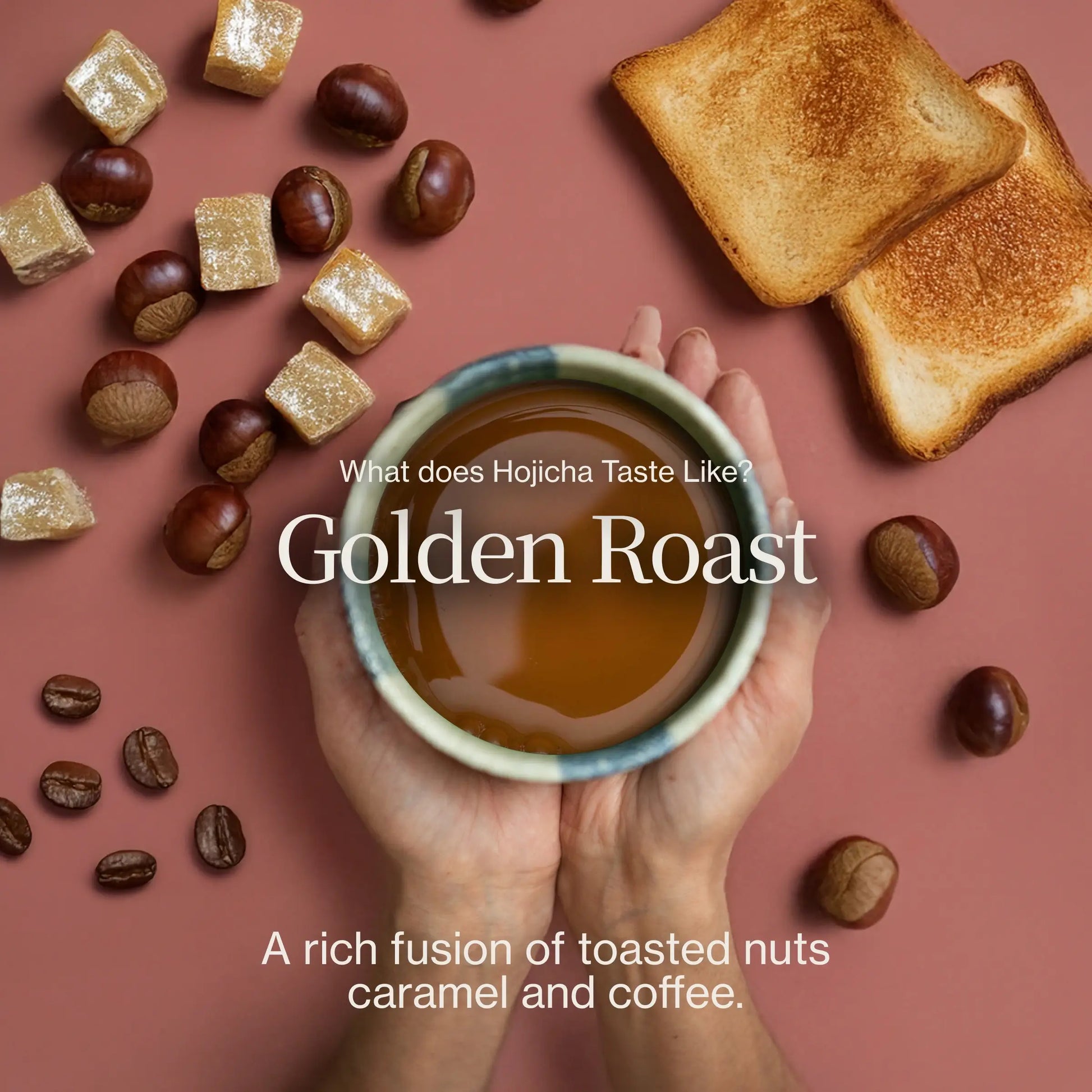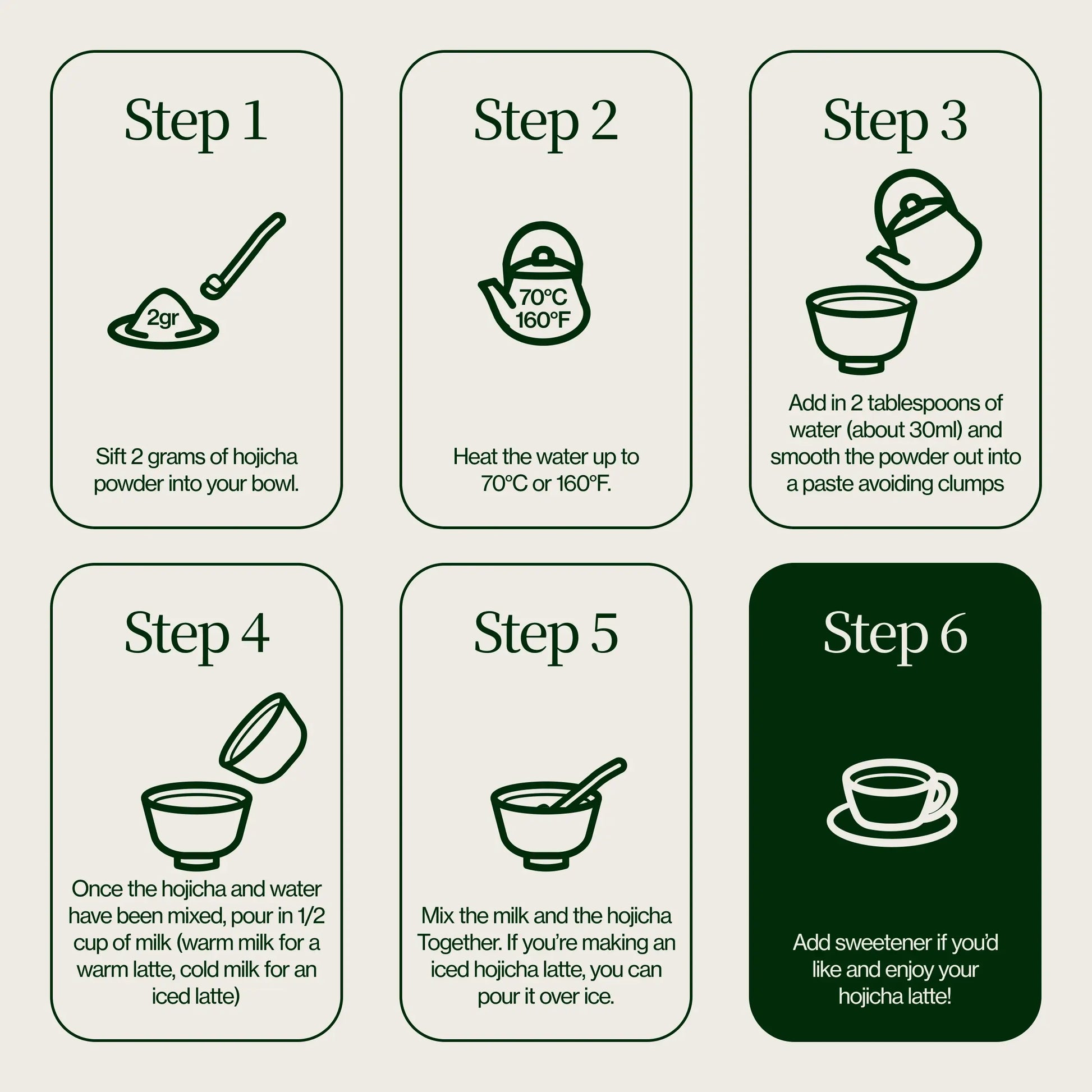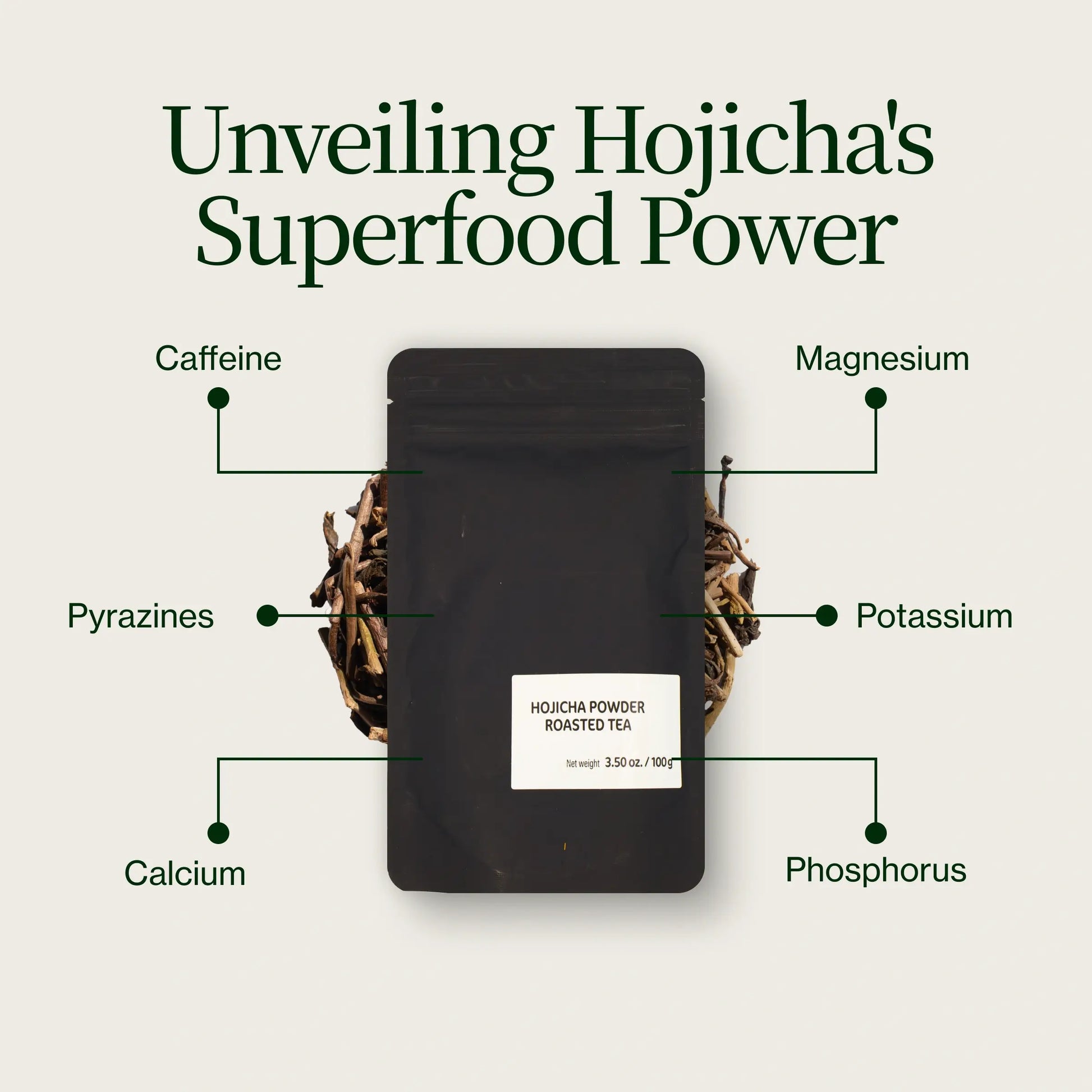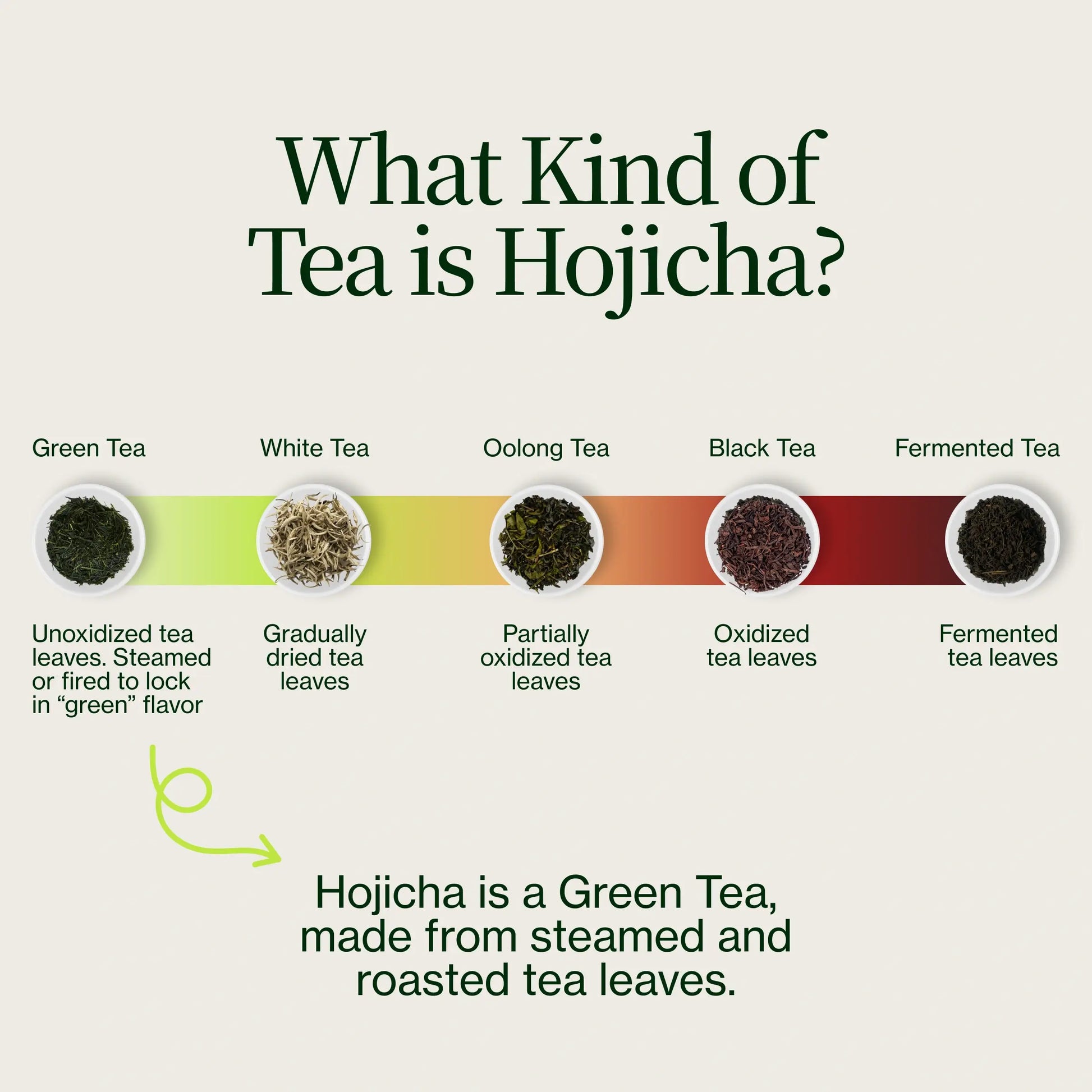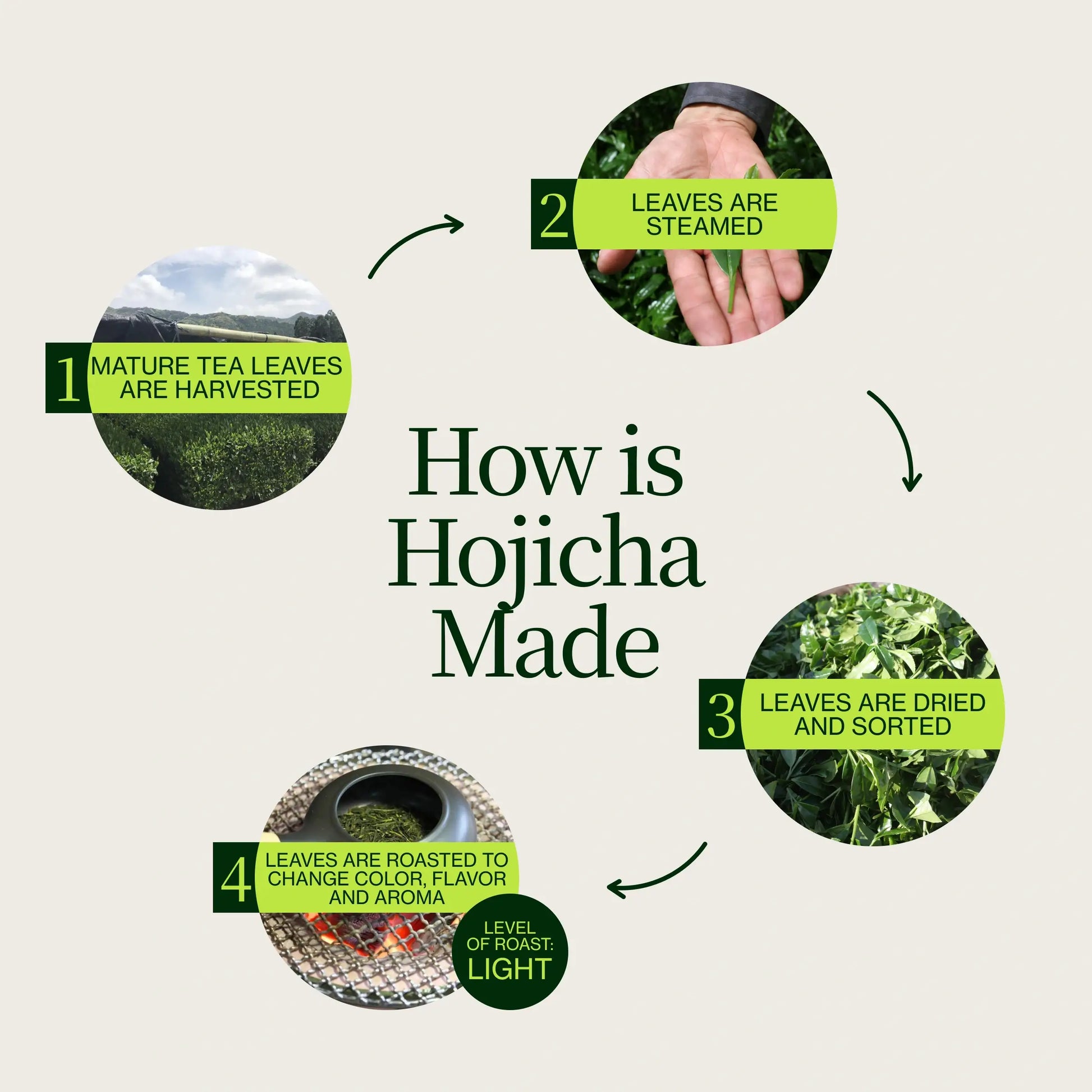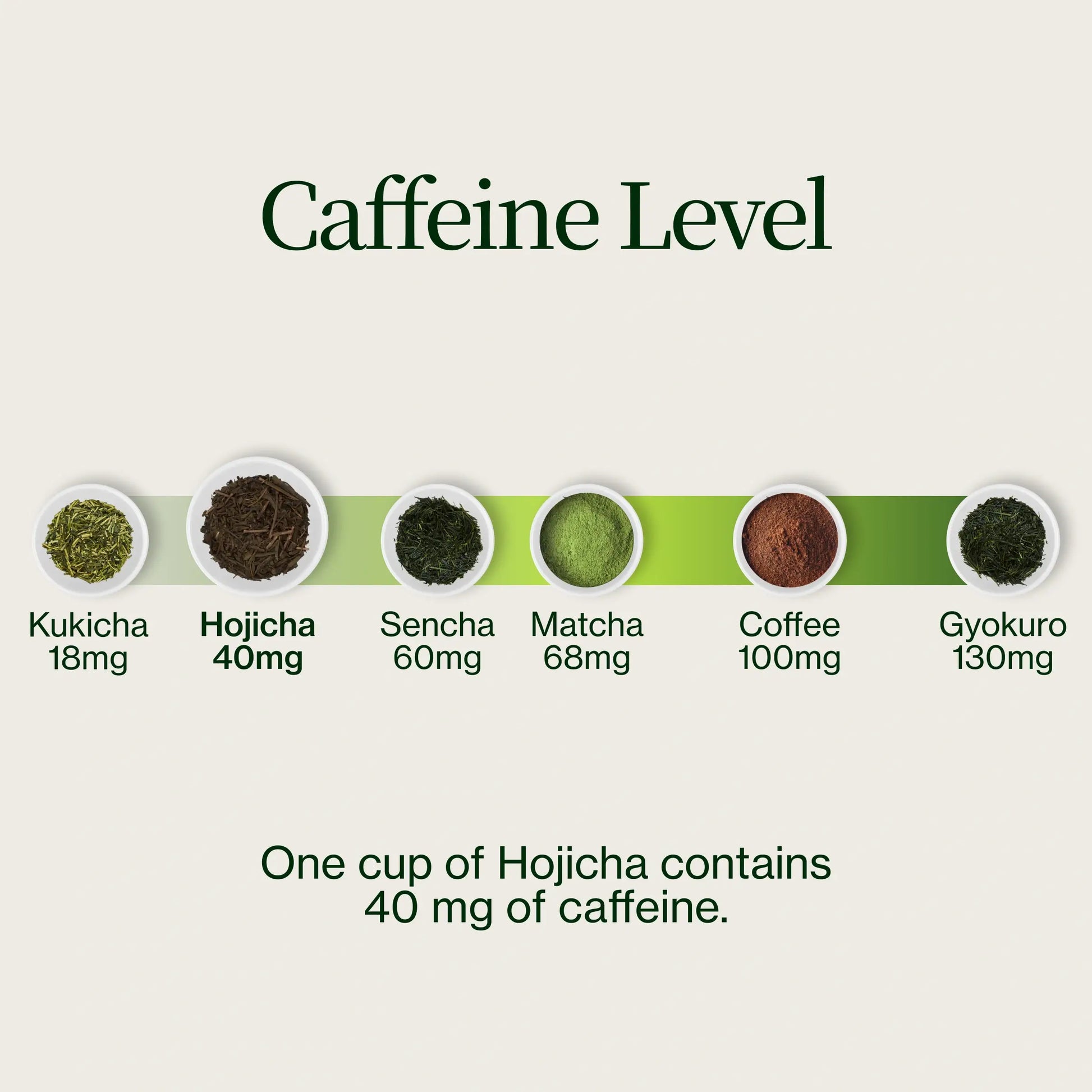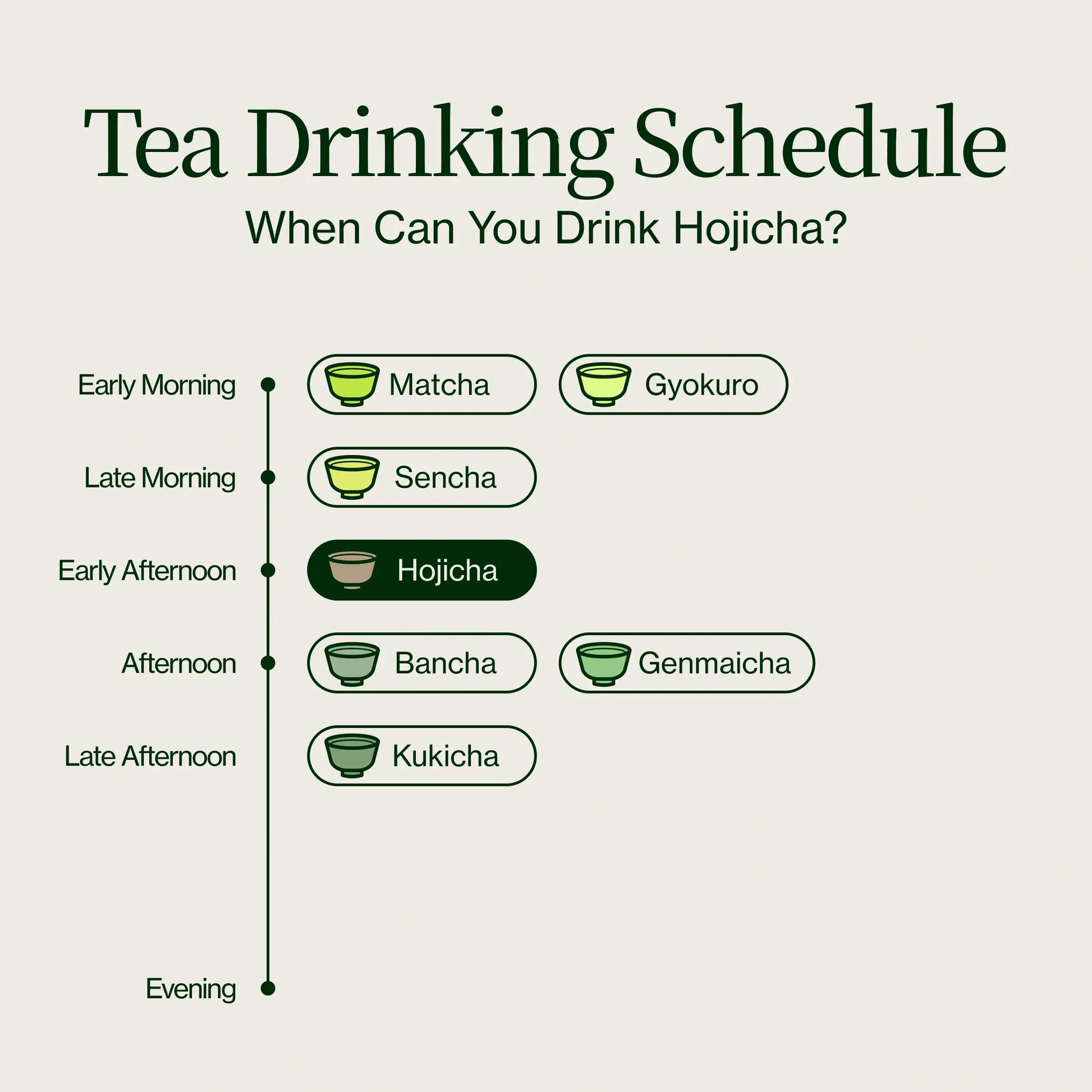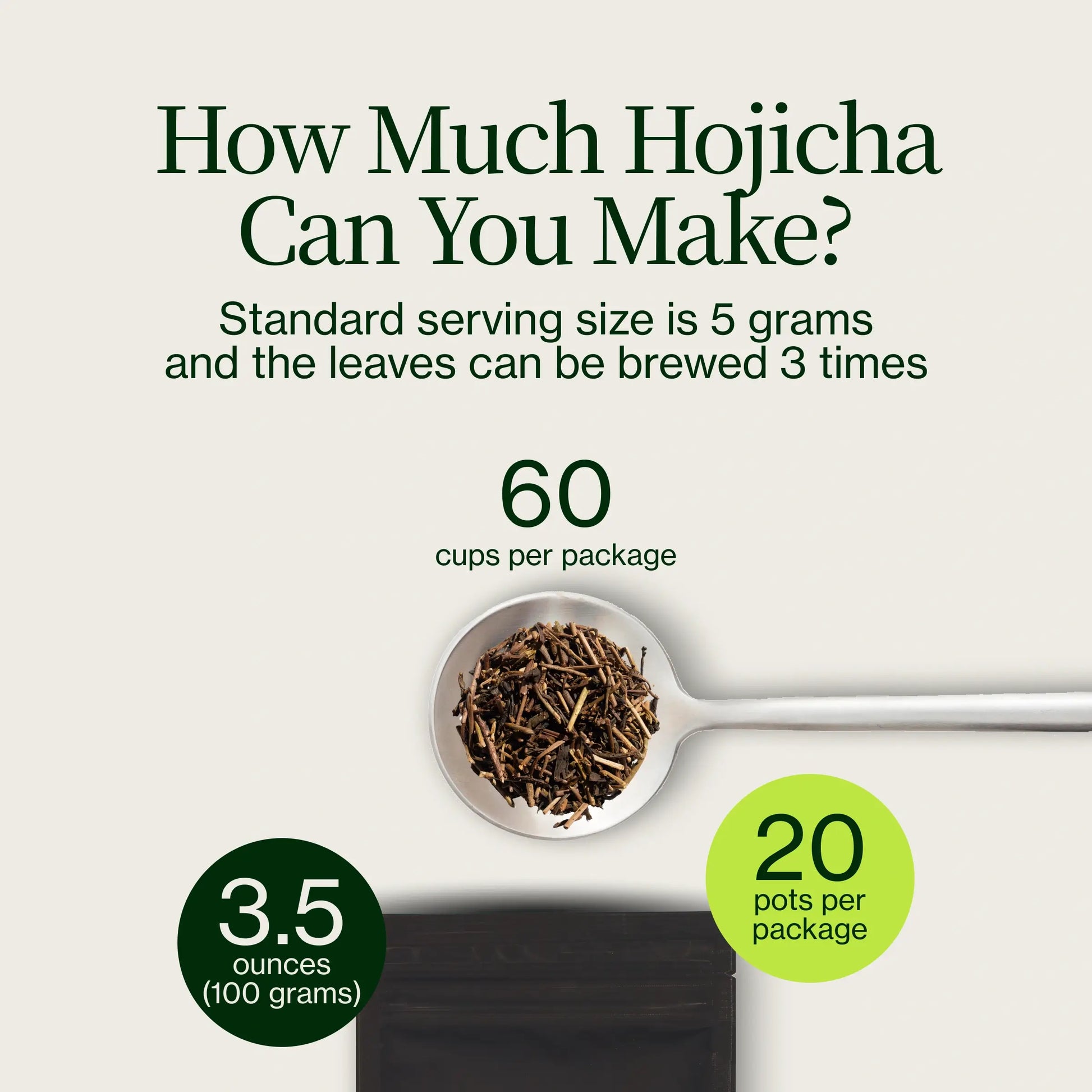Tè Giapponese Hojicha In Polvere
Tè Giapponese Hojicha In Polvere
🚚 Spedizione gratuita sopra i 55$
🍃 Senza pesticidi
🇯🇵 Provenienza diretta dal Giappone
🔐 Pagamento sicuro
😍 Ottimo servizio clienti
Blocco di testo
Impossibile caricare la disponibilità di ritiro
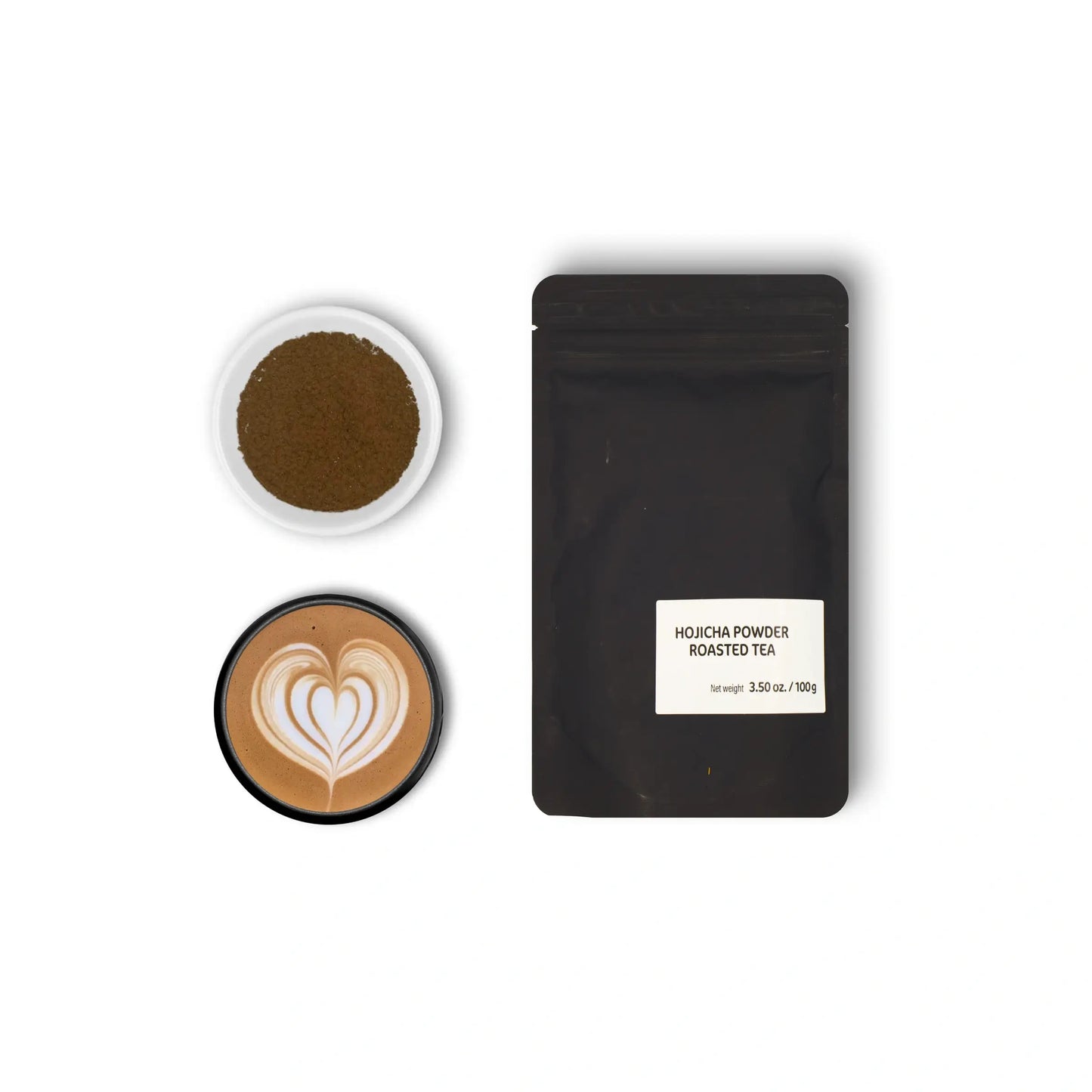
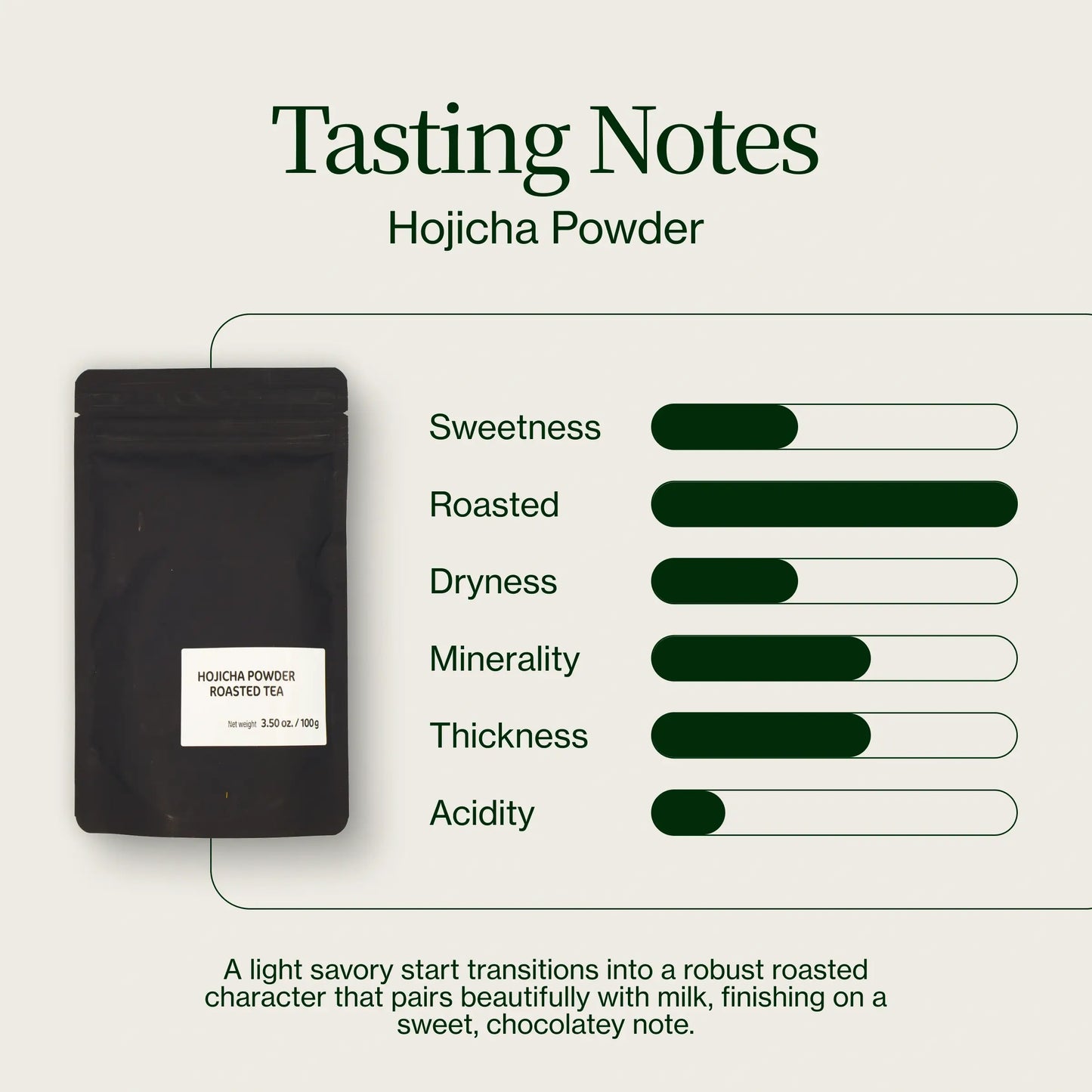
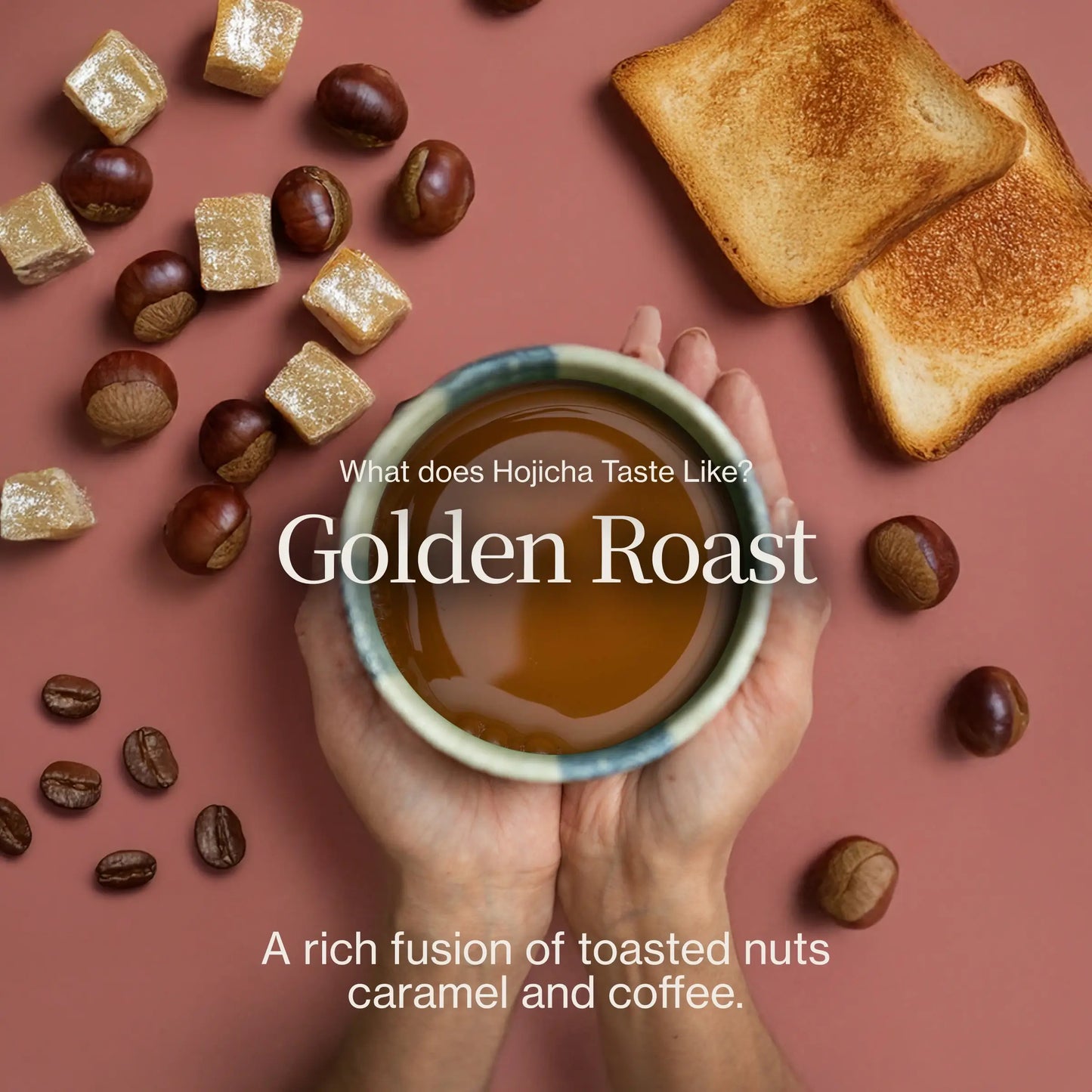
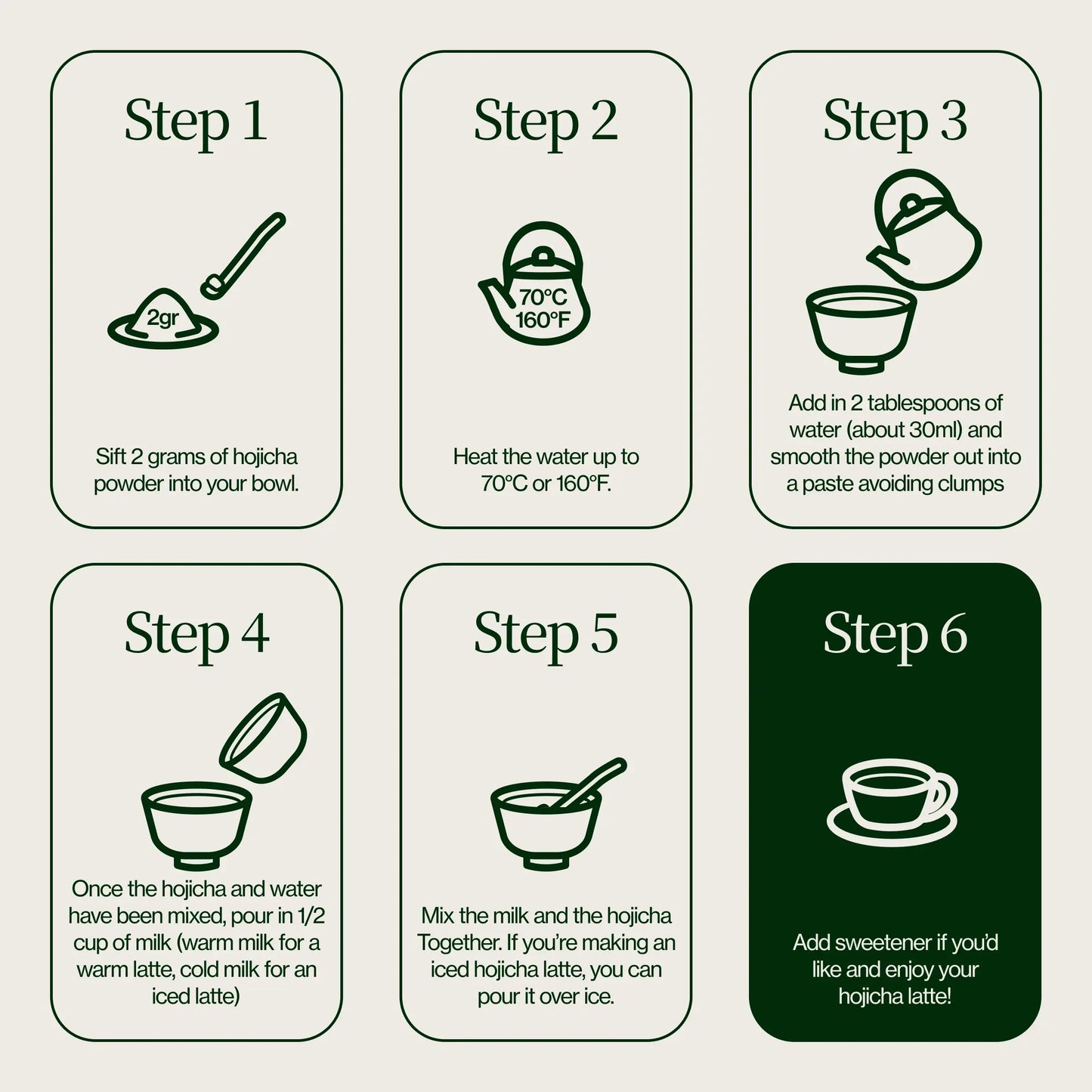
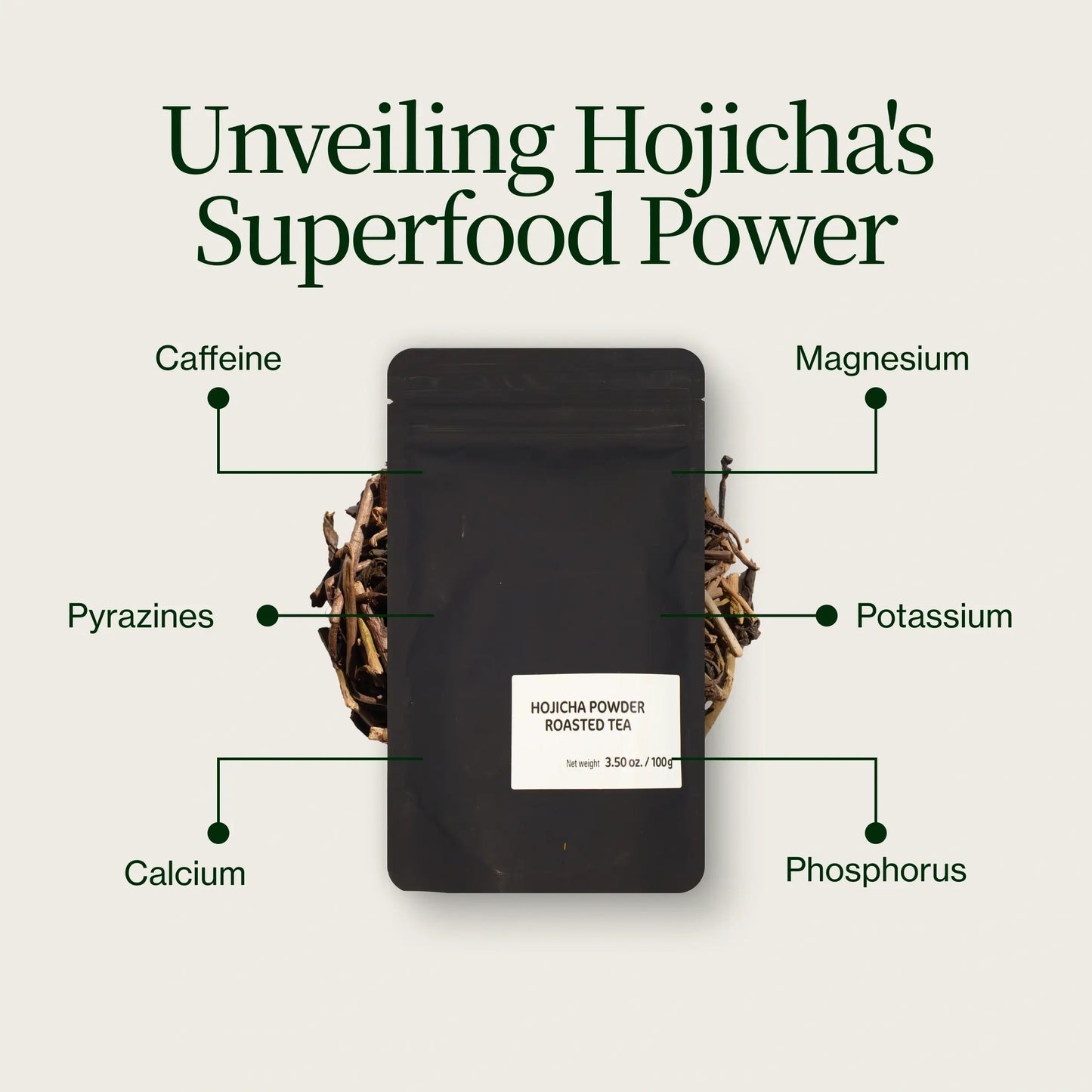
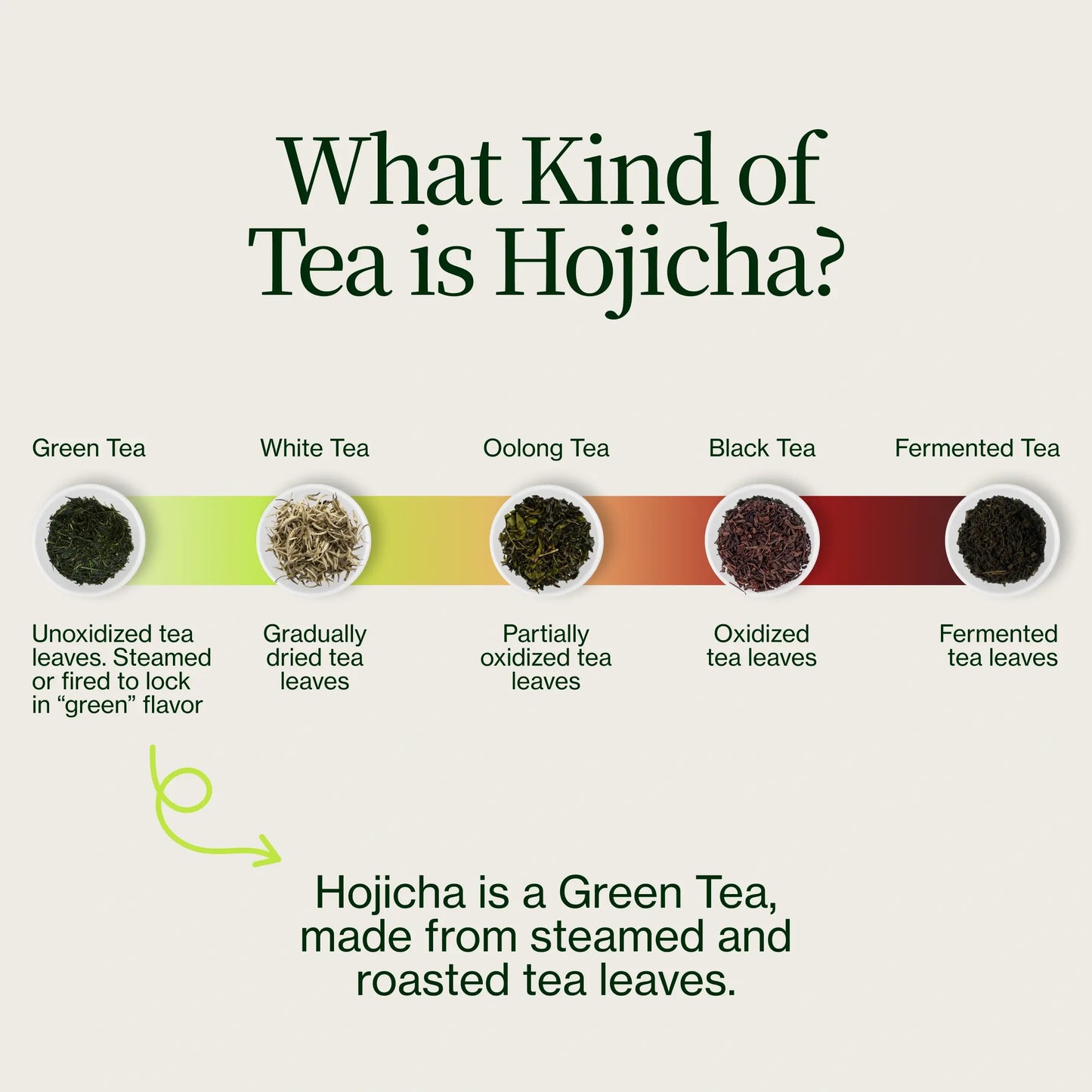
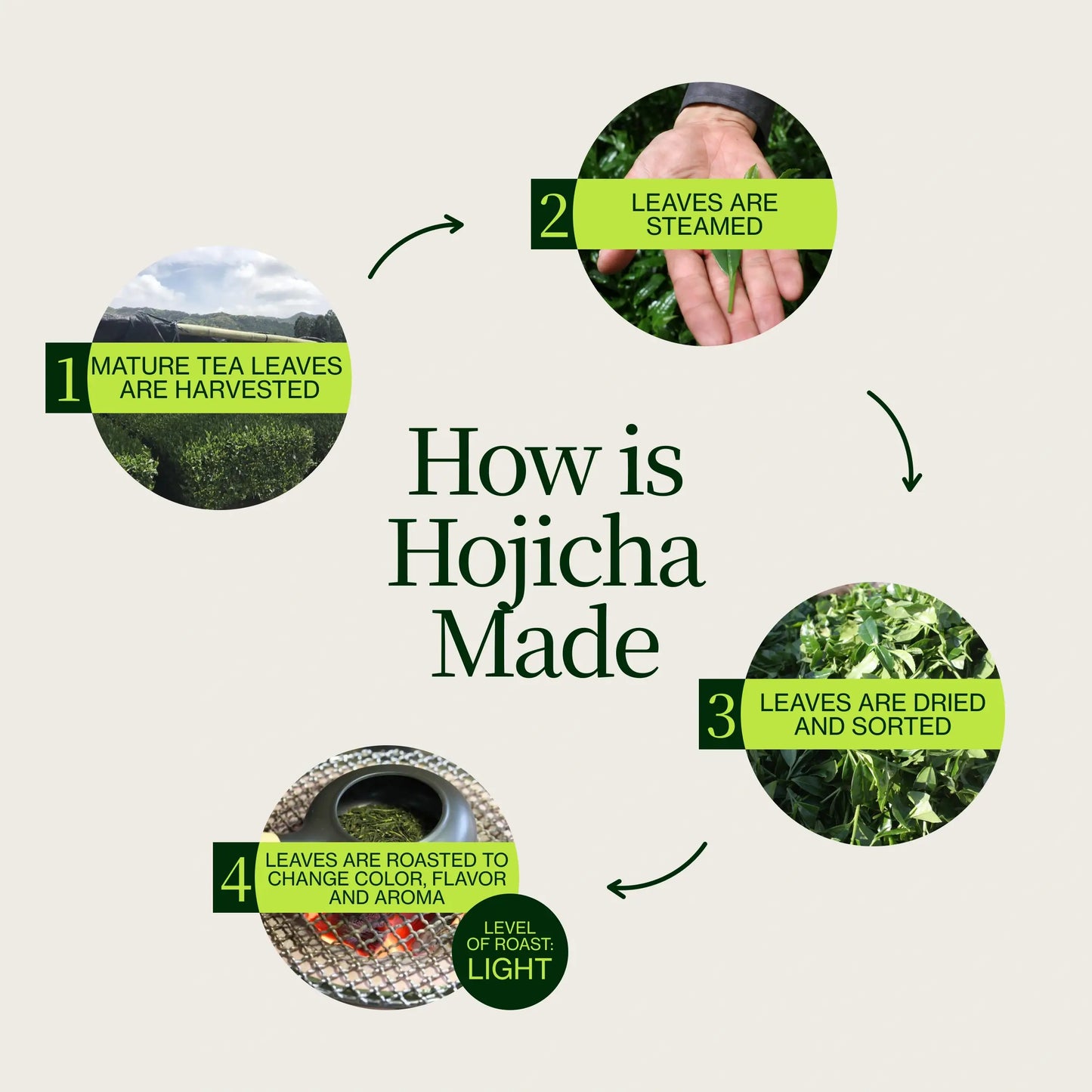
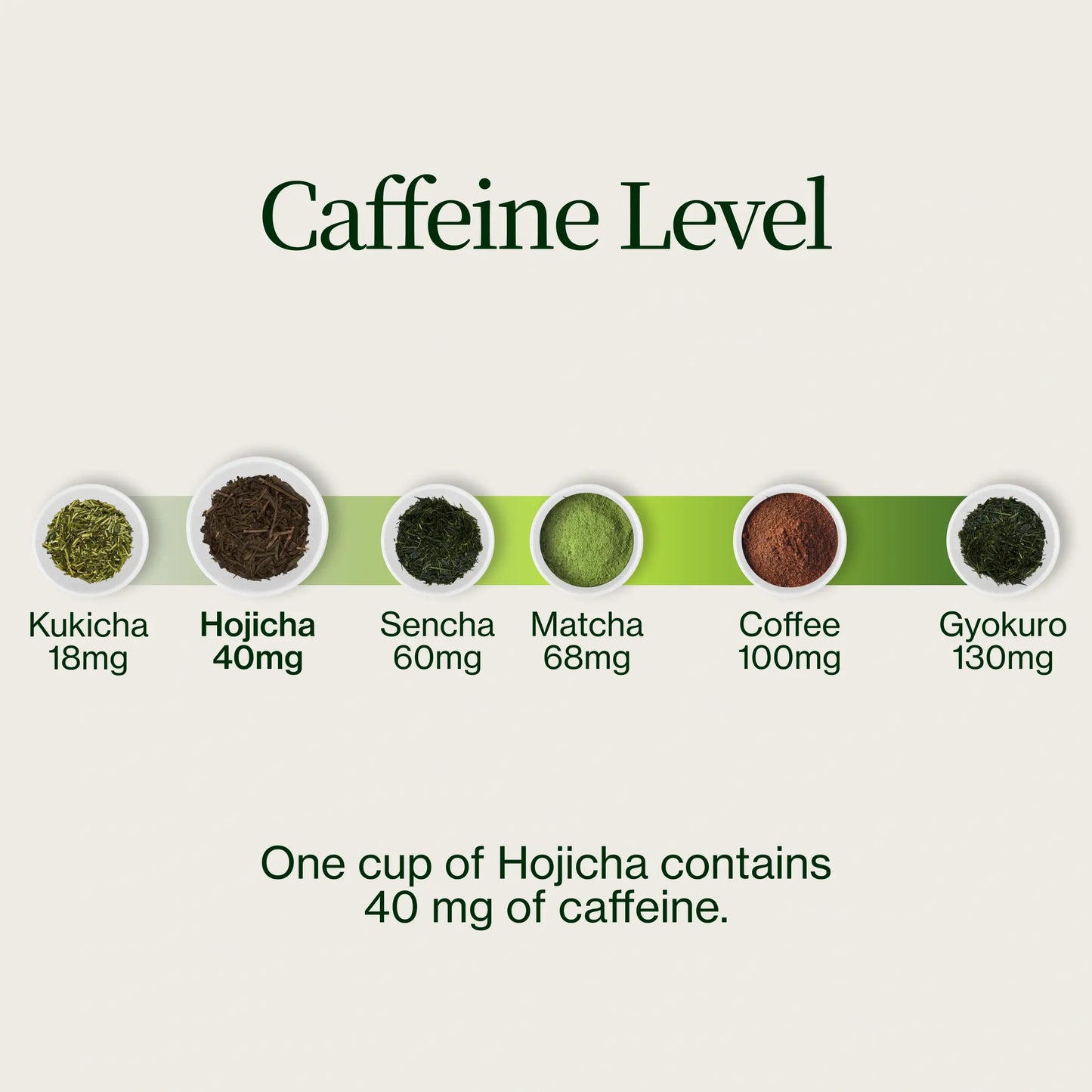
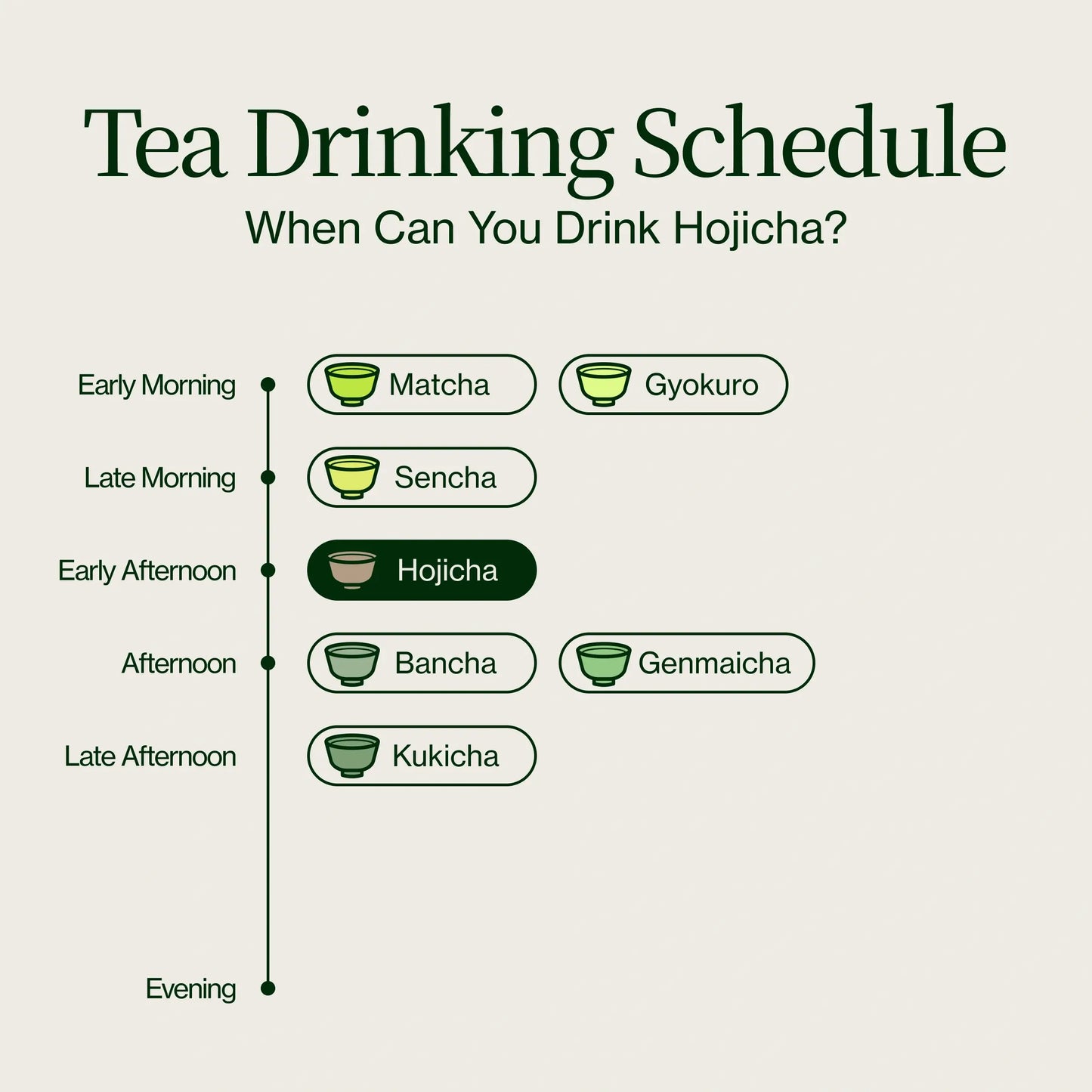
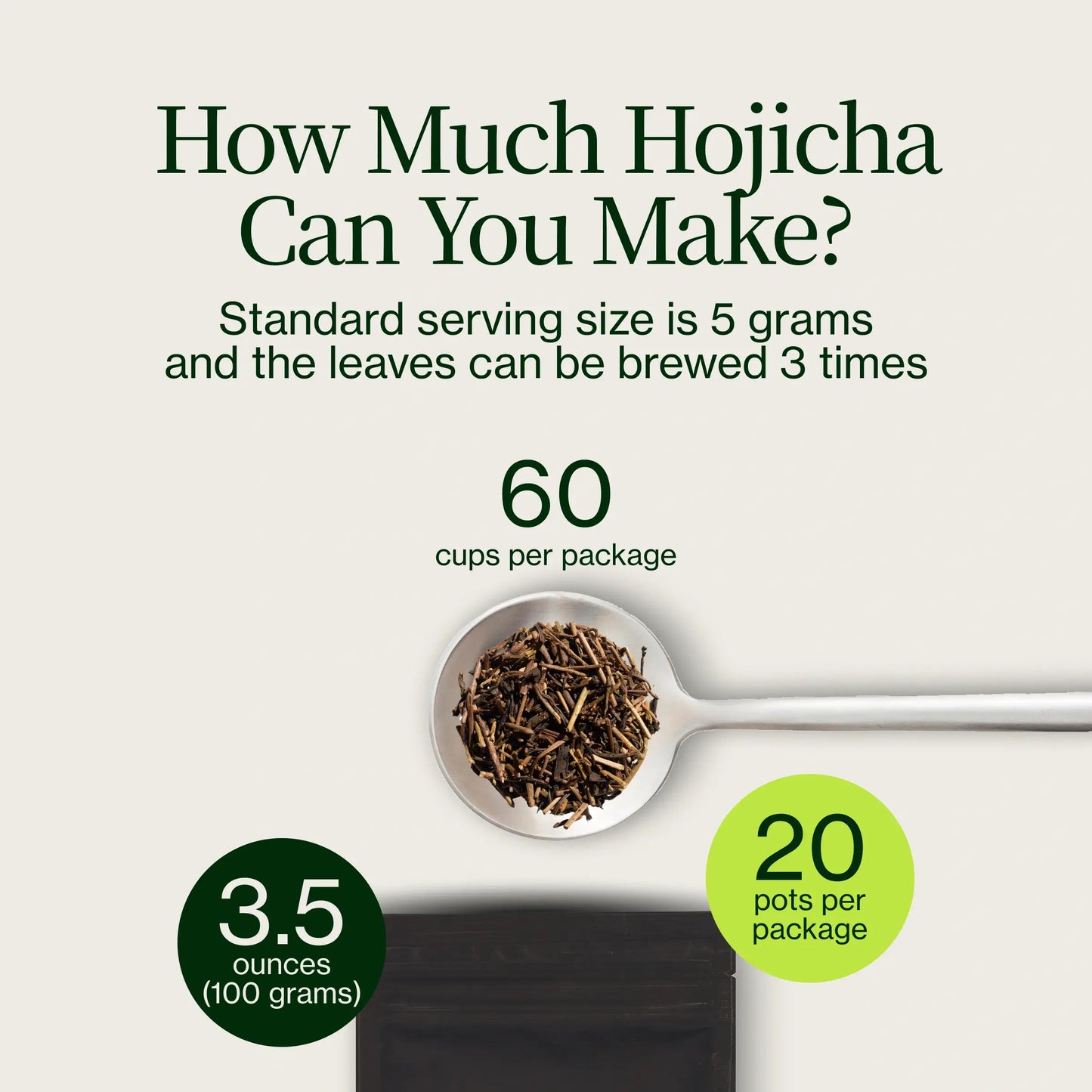





Hojicha la polvere è un ottimo modo per portare quel delizioso sapore di tè tostato in tutti i tipi di creazioni come Hojicha latte macchiato, Hojicha dolci e Hojicha spuntini. Hojicha La polvere è simile al matcha, ma viene macinata da foglie tostate, il che le conferisce aromi molto più caldi di caffè, caramello e cioccolato.
Gusto
Osservando l'aspetto
Il colore di questo Hojicha la polvere è di colore marrone scuro ed è finemente macinata fino a ottenere una polvere liscia.
Valutazione dell'aroma
L'aroma che emana Hojicha La polvere, una volta diluita in acqua, emana un intenso profumo tostato, con note di legno bruciato.
Assaggiare il tè
Il latte presenta un leggero sapore sapido che si trasforma rapidamente in un deciso profilo tostato che si sposa perfettamente con il latte. Infine, i profili tostati lasciano spazio a un finale dolce e cioccolatoso.
Valutazione della sensazione al palato
Il Hojicha la polvere ha dei profili aromatici forti che funzionano bene se ammorbiditi dal latte. La struttura del Hojicha Il latte è simile a quello del matcha latte, con i sapori morbidi e umami del latte che dominano all'inizio e poi i sapori tostati e cioccolatosi del Hojicha verso la fine.
rapporto: 2 grammi di polvere e ½ tazza di latte d'avena
Se hai ancora domande su cosa sia Hojicha polvere, puoi leggere questo articolo del blog che spiega tutto a riguardo!
Questa polvere biologica Hojicha La polvere è coltivata al 100% biologicamente.
Noi di Nio diamo grande valore alla nostra stretta collaborazione con i coltivatori di tè che coltivano il tè verde utilizzando tecniche prive di pesticidi e sostanze chimiche. Crediamo fermamente che questi metodi non solo migliorino il gusto e l'eccellenza del tè, ma promuovano anche la salute generale e la redditività a lungo termine delle piantagioni di tè.
I nostri incontri personali durante le visite alle piantagioni di tè in Giappone ci hanno dimostrato che le aziende agricole che evitano l'uso di pesticidi e sostanze chimiche favoriscono un ecosistema robusto e rigoglioso, a beneficio non solo delle piante di tè, ma anche della flora e della fauna che vivono in quella zona.
Nio Teas Processo di approvvigionamento esclusivo da agricoltura biologica
- Per trovare il meglio Hojicha Per sfruttare al meglio la polvere di tè che il Giappone ha da offrire, effettuiamo meticolosamente test di degustazione su ogni varietà di tè proveniente da diverse piantagioni.
- Manteniamo una comunicazione aperta con i coltivatori con cui collaboriamo per garantire il loro costante impegno nella produzione di tè con metodi privi di pesticidi e sostanze chimiche.
- Anche le visite di persona alle piantagioni fanno parte del nostro processo. Valutiamo sia le piantagioni di tè che gli impianti di produzione per verificarne la qualità.
- Diamo priorità alla promozione della biodiversità intorno alle piantagioni di tè, impegnandoci a creare un ecosistema fiorente che coesista armoniosamente con le nostre pratiche di coltivazione del tè. Non basta avere il meglio Hojicha polvere, vogliamo anche assicurarci che sia prodotta in modo sostenibile.
Tè JAS
Nella nostra collezione di tè, potresti notare l'etichetta JAS, acronimo di Japanese Agriculture Standards. Questa certificazione garantisce che i tè siano coltivati senza l'uso di pesticidi o sostanze chimiche, come verificato dal governo giapponese.
Quando collaboriamo con i coltivatori di tè più grandi, preferiamo che ci forniscano l'etichetta JAS, che ottengono attraverso rigorosi campionamenti e analisi del terreno per garantire che i loro tè soddisfino i più elevati standard di qualità e sostenibilità.
Inoltre, collaboriamo con piccoli coltivatori di tè che potrebbero non aver ancora ottenuto una certificazione formale, ma che praticano metodi senza pesticidi. Accettiamo l'etichetta "senza pesticidi" da questi agricoltori in quanto è in linea con il nostro impegno per la qualità e la sostenibilità, promuovendo al contempo le opportunità per i piccoli agricoltori di prosperare nel settore.
Come preparare il tè
Fase 1: Misurare 2 grammi o 1 cucchiaino di Hojicha polvere di latte e setacciarla sul fondo di una ciotola, assicurandosi che non ci siano grumi.
Passaggio 2: Aggiungere 1 cucchiaio di acqua tiepida al Hojicha polvere, quanto basta per creare una pasta liscia. Mescolare bene fino a quando il Hojicha la polvere di tè è completamente sciolta.
Passaggio 3: Versa ½ tazza del tuo latte preferito, come latte d'avena, latte di soia o qualsiasi altro tipo di latte a tua scelta. Se stai preparando un tè freddo Hojicha latte, puoi usare il latte refrigerato, mentre per un caldo Hojicha Latte, consigliamo di scaldare il latte in un pentolino.
Passaggio 4: Utilizzare una frusta per amalgamare Hojicha la pasta nel latte, mescolando fino ad ottenere una consistenza liscia e spumosa. Se preferisci il tuo Hojicha Per rendere il latte più dolce, questo è il momento di aggiungere i tuoi dolcificanti preferiti e mescolare bene.
Passaggio 5: Il tuo Hojicha Il latte è ora pronto per essere gustato! Se stai preparando un caffè freddo Hojicha latte, puoi aggiungere cubetti di ghiaccio o Hojicha cubetti di ghiaccio fatti da Hojicha latte in polvere per mantenerlo fresco. Sorseggia e assapora i sapori ricchi e cremosi del tuo caffè fatto in casa. Hojicha Latte. Buon appetito!
Se vuoi saperne di più su come preparare il caffè perfetto Hojicha latte, puoi leggere tutto a riguardo nel nostro blog.
Luogo di produzione e coltivatore
Chi produce il Hojicha polvere?
Questo Hojicha La polvere è prodotta da un talentuoso gruppo di agricoltori presso la Oishi Chaen a Yame. La fabbrica di tè Oishi fu fondata dalla famiglia Oishi nel lontano 1940 ed è rimasta di proprietà della famiglia, con l'azienda attualmente guidata dal signor Goji Oishi.
Oishi Chaen si impegna a continuare l'orgogliosa tradizione dei tè Yame di eccellente qualità e Hojicha Il latte in polvere non fa eccezione. Dopo aver assaggiato molti campioni inviati da agricoltori di tutto il Giappone, quello che ci ha presentato il signor Oishi è il migliore. Hojicha polvere che abbiamo provato fino ad oggi.
Dov'è il Hojicha polvere prodotta?
Il Hojicha La polvere di tè viene coltivata e prodotta a Yame, una delle regioni più famose per la produzione di tè giapponese. Yame è una piccola regione nella prefettura di Fukuoka, nel Giappone meridionale. È nota soprattutto per la produzione di alcuni dei migliori tè giapponesi. Gyokuro nel paese, ma come abbiamo visto dal Hojicha polvere di tè verde da Oishi, la regione è anche in grado di produrre alcuni dei migliori Hojicha anche in polvere.
Il Giappone meridionale beneficia di un clima mite e subtropicale, di abbondanti piogge e di ricchi terreni vulcanici, che lo rendono il luogo ideale per coltivare deliziosi tè verdi giapponesi.
Cultivar e varietà di piante di tè
Questo matcha latte istantaneo è prodotto dalla cultivar Yabukita, di gran lunga la varietà di pianta di tè più comune per la preparazione del matcha latte in polvere.
Yabukita
La cultivar Yabukita ha guadagnato un'immensa popolarità grazie ai suoi profili aromatici intensi, apprezzati da molti amanti del tè verde. Quando si tratta di preparare un Hojicha Latte, lo yabukita è una buona cultivar da utilizzare. I suoi sapori robusti sono esaltati dall'aggiunta di latte, dando vita a una bevanda cremosa e dolce che mantiene un sapore pronunciato. Hojicha gusto.
FAQ
Spedizione: al momento dell'acquisto Hojicha polvere, la spedizione è gratuita ovunque nel mondo. I tempi di consegna stimati sono in genere di 5-7 giorni per i clienti negli Stati Uniti e nell'Unione Europea, e fino a 10 giorni per le altre regioni. Per spedizioni rapide, offriamo opzioni aggiuntive a un costo minimo.
Problemi con l'ordine: in caso di problemi con il tuo ordine del Hojicha Per quanto riguarda il tè in polvere, il nostro servizio clienti è a vostra completa disposizione. Potete contattarci via email all'indirizzo info@nioteas.com o inviarci un messaggio diretto su Instagram all'indirizzo @nio_japanese_green_tea per domande rapide.
Pagamenti: Per offrirvi la massima comodità, accettiamo le principali carte di credito, PayPal e Apple Pay come metodi di pagamento per gli acquisti. Hojicha polvere. Se preferisci pagare tramite bonifico bancario, seleziona questa opzione al momento del pagamento e ti forniremo le informazioni necessarie. Il tuo ordine verrà spedito tempestivamente al ricevimento del pagamento.
Resi e rimborsi: La nostra massima priorità è garantire un'esperienza di tè positiva con Hojicha Tè verde in polvere. Se, per qualsiasi motivo, non siete soddisfatti del tè ricevuto, vi preghiamo di comunicarcelo e saremo lieti di sostituirlo per garantire la vostra completa soddisfazione.

